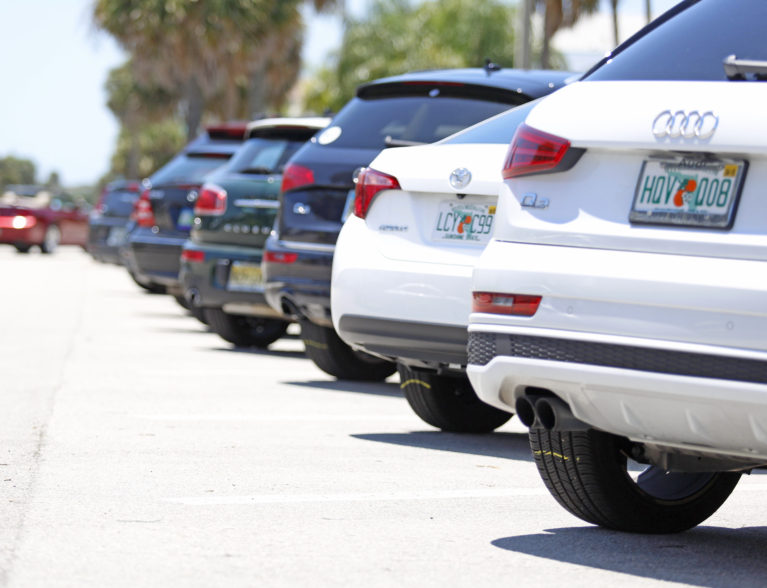
VERO BEACH — To pay or not to pay? Whether or not to implement paid parking was one of the questions contemplated among beachside business owners at a recent workshop aimed at attempting to solve the seasonal parking shortage on Ocean and Cardinal drives.
The meeting, held Tuesday Sept. 24 at the oceanside Holiday Inn & Suites Vero Beach and hosted by Kimley-Horn and Associates — a consultant for the city of Vero Beach tasked with solving the parking shortage that’s been plaguing the beachside area for at least a decade — drew nearly two dozen beachside business owners who broke out into groups to brainstorm fixes. The session yielded differing opinions on how to remedy the persistent problem.
Paid parking, one option presented by Kimley-Horn representatives, is a viable option that could revive a now defunct trolley used to shuttle predominantly hotel workers from Riverside Park to work, some said. Hotel employees, shop owners say, take up a bulk of the scarce on-street spaces and move their cars according to fluctuating time limits.
“Ocean Drive is very charming and quirky and we want it to remain charming and quirky,” said Patchington manager Jamie Giesea, who added the goal of paid parking would be to entice employees to use a trolley if it’s instituted. “I don’t think paid parking with harm the charm and the quirkiness.”
Consultants agreed that providing financial motivation to use the trolley system this time around could garner success. Implementing paid parking would also incentivize motorists to use surplus private parking, increase turnover of spaces, promote other modes of transportation and prevent long-term parkers from using on-street parking.
“It’s not a bad thing. It sort of means you’re successful as a community — a lot of people want to come there,” said David Taxman, a senior project manager with Kimley-Horn. “So don’t think of it as a negative.”
Ingrid Zagers, representing Allure Gallery Vero Beach, however, disagreed with the notion of paid parking.
“This is too small of an area and I think that you would get a lot of loss of revenue from businesses if you start charging customers to park. I don’t see that as a solution at all,” Zagers said.
Other options business owners were asked to rank and determine how the methods could help in the short- and long-term included: a shared parking program between the city and a private entity or between businesses, another off-site employee parking program, a graduated fine structure for repeat offenders, a centralized valet location where patrons can drop off and pick up their vehicles at different locations and the creation of an additional 79 parking spaces by permitting parking in front of multi-family housing or commercial buildings on east-west streets near the problem area.
A not so popular fix is the construction of parking garages, which could be an eye sore so close to the shoreline. One option is a $3 million garage on the Humistion Plaza public lot, which would create 100 spaces. Another potential location for a $4.8 million garage is on the Ocean Grill private lot, which would create an extra 150 spaces.
Kimley-Horn, which was hired by the city at a cost of roughly $71,000, has analyzed more than 3,000 beachside parking places spaces to see whom the spaces belong to and how they are being used. The firm found a majority of the 3,108 beachside parking spaces are privately owned, with only about 750 public spaces. During peak demand, on Thursday, March 14 at 2 p.m., all off-street public parking was taken and 89 percent of on-street public spaces were occupied, the firm found. Meanwhile there was a surplus of 655 private parking spaces. Kimley-Horn anticipates the public parking space deficit will grow to 158 in the coming decade.
The firm expects to make formal recommendations to the City Council before year’s end.



